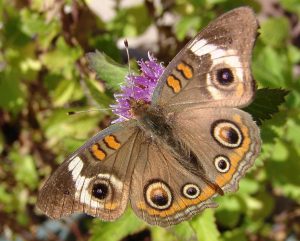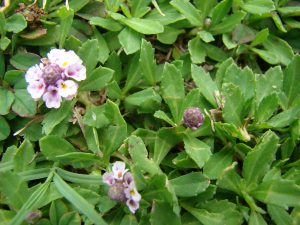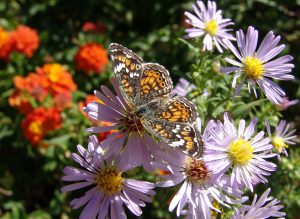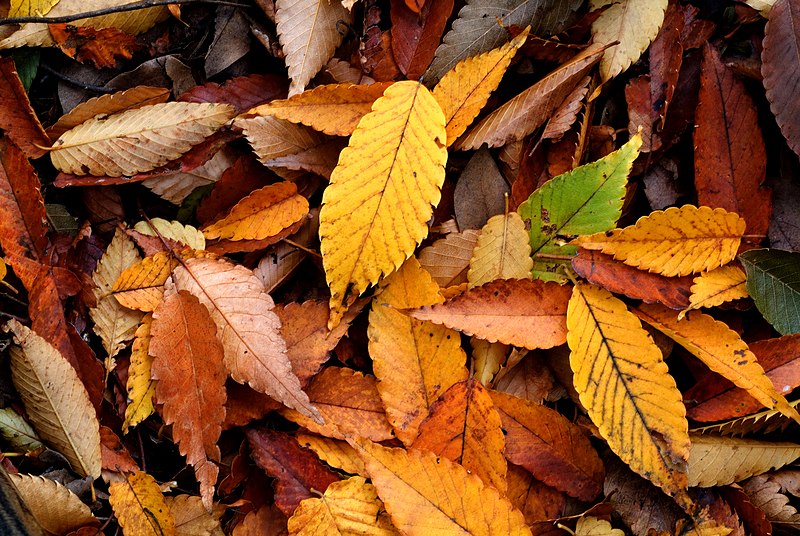Plant Profile: Frog Fruit
Views: 4314

Frog fruit (Phyla nodiflora) is a hardy wildlife-friendly native that fills an awkward spot in my garden that would otherwise be covered in mulch. A groundcover that is native to the southern half of the U.S., frog fruit remains evergreen unless hit by frost, in which case the leaves change to a reddish purple. In the south, it may go dormant over a cold winter, and it will die back in zones that expose the roots to freezing temperatures. However, it self-seeds freely.
Frog fruit stays low to the ground, rambling its way along. If planted in a rock garden or a pot, it may spill over rocks or the pot’s edges. It’s in the verbena family and prefers full sun to part shade. This is a plant that isn’t too fussy about soil type, although it does prefer to be dry. It even tolerates some salinity, and it can be found growing wild on beaches as well as fields. I recommend watering it during periods of drought and extreme heat.

Frog fruit, photo by Forest & Kim Starr, CC BY 3.0, https://commons.wikimedia.org/w/index.php?curid=6181125
The Lady Bird Johnson Wildflower Center describes frog fruit as a “vigorous spreader,” but in my experience, planted in poor, sandy soil, it only spread slowly. It didn’t choke out other plants; it merely filled in spaces between them. Other websites warn of “invasive tangles,” however, so it’s likely that results vary depending on conditions.
Butterflies
Frog fruit produces small, whitish flowers that aren’t particularly showy but do add color and attract butterflies. I originally planted it because it is a host plant for three butterflies: Common Buckeyes, Phaon Crescents, and White Peacocks. The Common Buckeye (top photo) is one of my favorite butterflies, so having its host plant in my yard is a must.

Phaon Crescent
As far as I know, frog fruit has nothing to do with frogs. It is also known as turkey tangle (as one word or two). I don’t think it has anything to do with turkeys, either. I couldn’t find any reference as to why it is called either name. One website mentioned that deer love to graze it, so take note if you’re wary of plants that aren’t deer resistant.
Meet Leslie Miller
Leslie Ann Miller shares 3.5 acres in rural Oklahoma with birds, butterflies and wide variety of animals. She is currently transforming her yard with plantings…
Leslie's Recent Posts

Preparing Your Wildlife Garden for Winter






